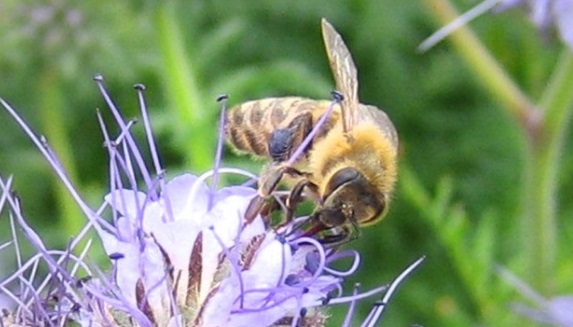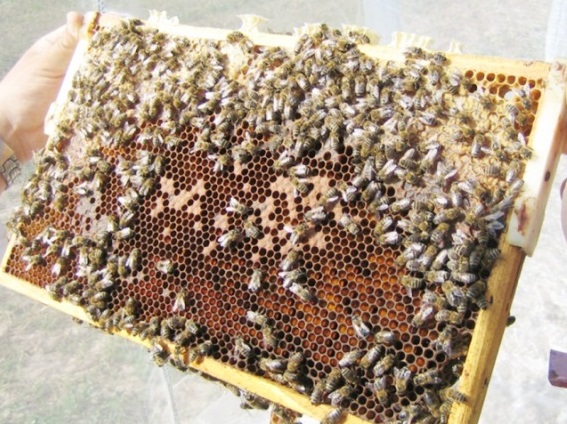- Your Product Type
- Your Study Type
- Aquatic Ecotoxicology
- Aquatic Invertebrates
- OECD 202: Daphnia sp., Acute Immobilisation Test
- OECD 211: Daphnia magna Reproduction Test
- OECD 235: Chironomus sp., Acute Immobilisation Test
- OECD 218/219: Sediment-Water Chironomid Toxicity Test Using Spiked Sediment/Spiked Water
- OECD 233: Sediment-Water Chironomid Life-Cycle Toxicity Test Using Spiked Water or Spiked Sediment
- OECD 225: Sediment-water Lumbriculus Toxicity Test Using Spiked Sediment
- OECD 242: Potamopyrgus antipodarum Reproduction Test
- OECD 243: Lymnaea stagnalis Reproduction Test
- Fish and other vertebrates
- OECD 203: Fish, Acute Toxicity Test
- OECD 215: Fish Juvenile Growth Study
- OECD 212: Fish, Short-term Toxicity Test on Embryo and Sac-fry Stages
- OECD 231: The Amphibian Metamorphosis Assay
- OECD 236: Fish Embryo Acute Toxicity Test
- OECD 210: Fish, Early-life Stage Toxicity Test
- OECD 229 Fish Short Term Reproduction Assay and OECD 230 21-day Fish Assay
- OECD 240 Medaka Extended One Generation Reproduction Test (MEOGRT)
- OECD 248: Xenopus Eleutheroembryonic Thyroid Assay
- OPPTS 850.1500: Fish Life Cycle Toxicity Test
- OÈCD 234 Fish sexual development test
- Aquatic plants
- Analytical Dose Verification
- Aquatic Invertebrates
- Chemistry
- Biodegradation Studies
- Analytical Chemistry Studies and Residues
- Physical-Chemical Properties Studies
- Storage Stability Studies
- OPPTS 830.6302, OPPTS 830.6303,and OPPTS 830.6304: Physical State, Colour and Odor at 20 °C and at 101.3 kPa
- EU A.1: Melting temperature/range
- EU A.2: Boiling temperature
- EU A.3: Relative density (liquids and solids)
- EU A.4: Vapour pressure
- EU A.5: Surface tension
- EU A.9: Flashpoint
- EU A.10: Flammability (solids)
- EU A.12: Flammability (contact with water)
- EU A.13: Pyrophoric properties of solids and liquids
- EU A.16: Relative self-ignition temperature for solids
- EU A.17: Oxidising properties
- OECD 114: Viscosity of Liquids
- Environmental Fate
- Transformation in Soil
- Transformation in Water
- Transformation in Manure
- Adsorption on Soil and Sewage Sludge
- Bioaccumulation and Bioconcentration
- Terrestrial Ecotoxicology
- Non-target Arthropods
- Non-target arthropod testing with the parasitic wasp (Aphidius rhopalosiphi)
- Non-target arthropod testing with the lacewing (Chrysoperla carnea)
- Non-target arthropod testing with the ladybird beetle (Coccinella septempunctata)
- Non-target arthropod testing with the predatory bug (Orius laevigatus)
- Non-target arthropod testing with the predatory mite (Typhlodromus pyri)
- Non-target arthropod testing with the rove beetle (Aleochara bilineata)
- Non-target arthropod testing with the carabid beetle (Poecilus cupreus)
- Non-target arthropod testing with the wolf spider (Pardosa spec.)
- Soil Organisms
- Honey Bees and other Pollinators
- OECD 213/214: Honey bees, Acute Oral and Acute Contact Toxicity Test
- OECD 245: Honey Bee (Apis Mellifera L.), Chronic Oral Toxicity Test (10-Day Feeding)
- OECD 237: Honey Bee Larval Toxicity Test, Single Exposure
- OECD 239: Honey Bee Larval Toxicity Test
- EPPO 170: Honey Bee Field Study – do plant protection products effect honey bee colonies?
- Oomen et al. 1992: Honey Bee Brood Feeding Study
- OECD 75: Honey Bee Brood Test under Semi-field Conditions in Tunnels
- OECD 246/247 Acute Oral and Contact Toxicity to the Bumblebee, Bombus terrestris L.
- Solitary Bee Acute Contact Toxicity Study in the Laboratory (Osmia sp.) Solitary Bee Acute Oral Toxicity Study in the Laboratory (Osmia sp.) (protocols for ringtests with solitary bees recommended by the non-Apis working group)
- SANTE/11956/2016 rev.9 Residue trials for MRL setting in honey
- Non-target plants
- OECD 208: Terrestrial Plant Test - Seedling Emergence and Seedling Growth Test
- OECD 227: Terrestrial Plant Test - Vegetative Vigour Test
- OCSPP 850.4100: Seedling Emergence and Seedling Growth
- OCSPP 850.4150: Vegetative Vigor
- EPPO PP 1/207(2): Efficacy evaluation of plant protection products, Effects on succeeding crops
- Field Studies
- Non-target Arthropods
- Ecological Modelling
- Quality Assurance
- Testing of Potential Endocrine Disruptors
- Aquatic Ecotoxicology
- News
- Company
- Career
- Contact
OECD 245: Honey Bee (Apis Mellifera L.), Chronic Oral Toxicity Test (10-Day Feeding)
Honeybees may be exposed to plant protection products after spray application directly by contact or by oral consumption of contaminated pollen and nectar. Therefore the laboratory tests with adult honeybee workers for acute oral and contact toxicity (OECD 213 and 214) are important parts of the environmental risk assessments for the european registration process. But single acute exposure scenarios are not representative of the exposure of in-hive honeybees to products which may persist in nectar and/or pollen. A chronic oral uptake of a product may cause unacceptable effects to the honey bees in much lower concentrations as an acute single exposition. Therefore the chronic feeding test is an additional laboratory test to consider the effects of a 10 day oral exposition of adult honeybees to a plant protection product.

Study Design
Test organisms
The test is carried out with freshly emerged Apis mellifera worker honeybees from ibacon’s own apiary with disease-free and queen-right colonies. Brood frames are taken out of the hives and bees are swept out. Afterwards the combs are brought to the laboratory and are placed in a hatching box in an incubator. After a hatching period of at least one day, the bees will be taken out from the hatching box in the incubator and will be transferred into test units. The bees will then be acclimatized under test conditions and fed with 50 % w/v sucrose solution for one further day.
Course of the test
Freshly hatched worker honeybees are fed ad libitum with treated sugar solutions for 10 days via feeders. Aim of the test is the determination of a median lethal concentration (LC50) (full dose response test) or the detection of a NOEC (no observed effect concentration) (limit test) for an oral 10 days exposure to a test item.
The test item will be dissolved in 50 % w/v sucrose solution or it will be dissolved in a suitable solvent (e.g. acetone; for test items of low water solubility) and will be mixed with 50 % w/v sucrose solution. The reference item dimethoate will be dissolved in 50 % w/v sucrose solution. Appropriate control treatment groups (e.g. 50 % w/v sucrose solution and a solvent control, if necessary) will be used in the test.
Preliminary non-GLP tests can be carried out in order to determine the choice of appropriate test item solvent and concentrations.
The collected bees are randomly distributed in groups of 10 individuals into stainless steel test cages with a removable glass sheet as front side. The cages are stored in darkness in an incubator at a temperature of 33 ± 2°C.
The above mentioned treated and untreated sugar feeding solutions are administered to the bees ad libitum via weighed feeders. Every day the feeders are replaced by fresh ones to ensure that the bees have a continuous access to treated food throughout the study. The replaced feeders are weighed again for a calculation of individual daily food consumption per bee.
In order to adjust food uptake for possible evaporation of test solutions from the feeders 3 similar replicate cages are set up. These cages will contain no bees, only pre-weighed feeders containing diet of untreated or solvent control. These will be placed in the test environment alongside the test units. At the daily feeder exchange the feeders will be re-weighed and replaced with new feeders. This evaporation figure can then be subtracted from the calculated uptake to give the real uptake accounting the loss by evaporation.
Assessments
The following test parameters are assessed:
- Mortality: daily counts of dead bees during the entire exposure phase. If possible a LC50 and/or a NOEC are calculated.
- Behavioural abnormalities: any signs of intoxication are recorded throughout the trial (e.g. movement coordination problems, apathy).
- Food uptake: every day the actual food consumption per bee is measured and recorded.

Validity Criteria
Control and reference item groups ensure that the test results show high accuracy and trueness. Each test is reliably validated by the following criteria:
- Mortality in the control group: ≤ 15 % on day 10
- Mortality in the reference item group: ≥ 50 % on day 10
Endpoints
LC50/LD50; NOEC/NOED
Guidelines and Literature
- OECD 245: OECD Guideline for the Testing of Chemicals on Honey Bee (Apis Mellifera L.), Chronic Oral Toxicity Test (10-Day Feeding), (2017)
- CEB (Commission des Essais Biologiques), 2012. Méthode d’évaluation des effets de toxicité aiguȅ et á court terme des préparations phytopharmaceutiques sur l’abeille domestique (Apis mellifera L.). AFPP method n°230
-
Kling, A. & Schmitzer, S. (2015): Proposal for a new OECD guideline for the testing of chemicals on adult honey bees (Apis mellifera L.) in a 10 day chronic feeding test in the laboratory and results of the recent ring test 2014. Hazards of pesticides to bees - 12th International Symposium of the ICP-PR Bee Protection Group, Ghent (Belgium), 15-17 September 2014. Julius-Kühn-Archiv, 450, pp. 69-74.
